- Data Basin |
- Datasets |
- Priority Areas for Wildlife Habitat and Movement, Sonoma County Vital Lands Initiative (weblink)
Priority Areas for Wildlife Habitat and Movement, Sonoma County Vital Lands Initiative (weblink)
- Description:
This layer was developed by Sonoma County Ag + Open Space as a component of the Vital Lands Initiative . For additional information please contact Alex Young, Conservation GIS Coordinator
PRIORITY AREAS FOR WILDLIFE HABITAT & MOVEMENT
The following criteria were used to develop the priority areas for wildlife habitat and movement layer:
- Landscape Connectivity (The Nature Conservancy)
- Within a Bay Area Critical Linkage
LANDSCAPE CONNECTIVITY (THE NATURE CONSERVANCY)
The Nature Conservancy landscape connectivity layer represents wall-to-wall regional habitat connectivity for plant and animal species whose movement is limited by developed and agricultural uses. The layer was developed using a modified version of Circuitscape, a connectivity analysis software package with relies on electronic circuit theory to predict patterns of movement among plant and animal populations in heterogeneous landscapes. To learn more about these data and to view the entire statewide dataset, please visit www.tinyurl.com/ca-connectivity
Landscape connectivity priorities were assigned as follows:
• Highest Priority = channelized connectivity (restricted to narrow corridor; often the last remaining option for connectivity between nature areas through a modified environments) and intensified connectivity (i.e. land use reduces options for movement between natural areas)
• Medium Priority = diffuse connectivity (highly permeable; many options for movement through natural lands with fewer fragmentation barriers)
• Low Priority = land use may limit movement (primarily agricultural land uses)
• Lowest Priority = developed/land use impedes movement
CRITICAL LINKAGES: BAY AREA AND BEYOND
Through the Critical Linkages: Bay Area and Beyond (2013) project, 14 landscape level connections were mapped within the Bay Area based on ecological integrity and habitat and movement requirements of 66 focal plant, insect, fish, amphibian, reptile, bird and mammal species. Areas within critical linkages were given high priority; areas not within critical linkages were given lower priority. The final priority wildlife habitat and movement layer is based on maximum priority values between the prioritized Conservation Lands Network Critical Linkage layer and a prioritized Landscape Connectivity layer.
DATA CITATION
Penrod, K., P. E. Garding, C. Paulman, P. Beier, S. Weiss, N. Schaefer, R. Branciforte and K. Gafney. 2013. Critical Linkages: Bay Area & Beyond. Produced by Science & Collaboration for Connected Wildlands, Fair Oaks, CA. www.scwildlands.org in collaboration with the Bay Area Open Space Council’s Conservation Lands Network. www.BayAreaLands.org.
- Data Provided By:
- www.scwildlands.org, Sonoma County Ag & Open Space
- Map Service URL:
- https://tiles.arcgis.com/tiles/T28pwDrCgkiWvlLK/arcgis/rest/services/Priority_Areas_for_Wildlife_Habitat_and_Movement/MapServer
- Content date:
- not specified
- Citation:
- Penrod, K., P. E. Garding, C. Paulman, P. Beier, S. Weiss, N. Schaefer, R. Branciforte andK. Gaffney. 2013. Critical Linkages: Bay Area & Beyond. Produced by Science & Collaboration for ConnectedWildlands, Fair Oaks, CA www.scwildlands.org in collaboration with the Bay Area Open Space Council’sConservation Lands Network www.BayAreaLands.org.
- Contact Organization:
- Sonoma County Ag + Open Space
- Contact Person(s):
- Use Constraints:
- The user accepts sole responsibility for the correct interpretation of this report and the correct use of its accompanying data sets in environmental documents. The Essential Habitat Connectivity map delineates lands likely important to wildlife movement between large, mostly natural areas at the statewide scale based on available data and assumptions provided in this report. It omits small natural areas and does not reflect movement needs of particular species. It is a decision-support tool to be refined by finer-scale analyses and local linkage designs. DO NOT assume that lands outside Natural Landscape Blocks or Essential Connectivity Areas are unimportant to wildlife populations or movements.
- Layer:
- Layer Type:
- Currently Visible Layer:
- All Layer Options:
- Layers in this dataset are based on combinations of the following options. You may choose from these options to select a specific layer on the map page.
- Description:
- Spatial Resolution:
- Credits:
- Citation:
- Purpose:
- Methods:
- References:
- Other Information:
- Time Period:
- Layer Accuracy:
- Attribute Accuracy:
- Dataset Type:
-
External Map Service (ArcGIS)
About the Uploader

Conservation GIS Coordinator


